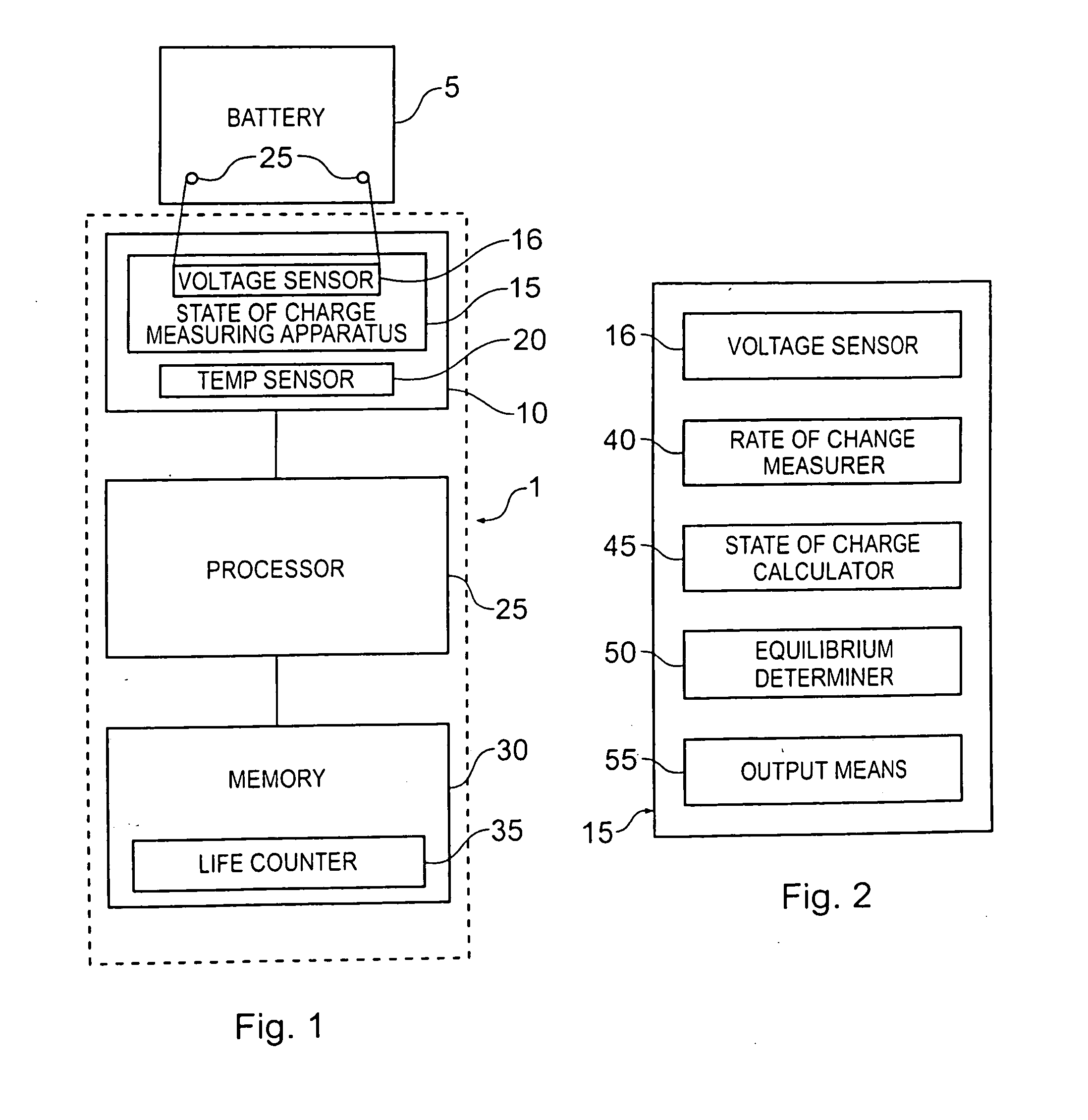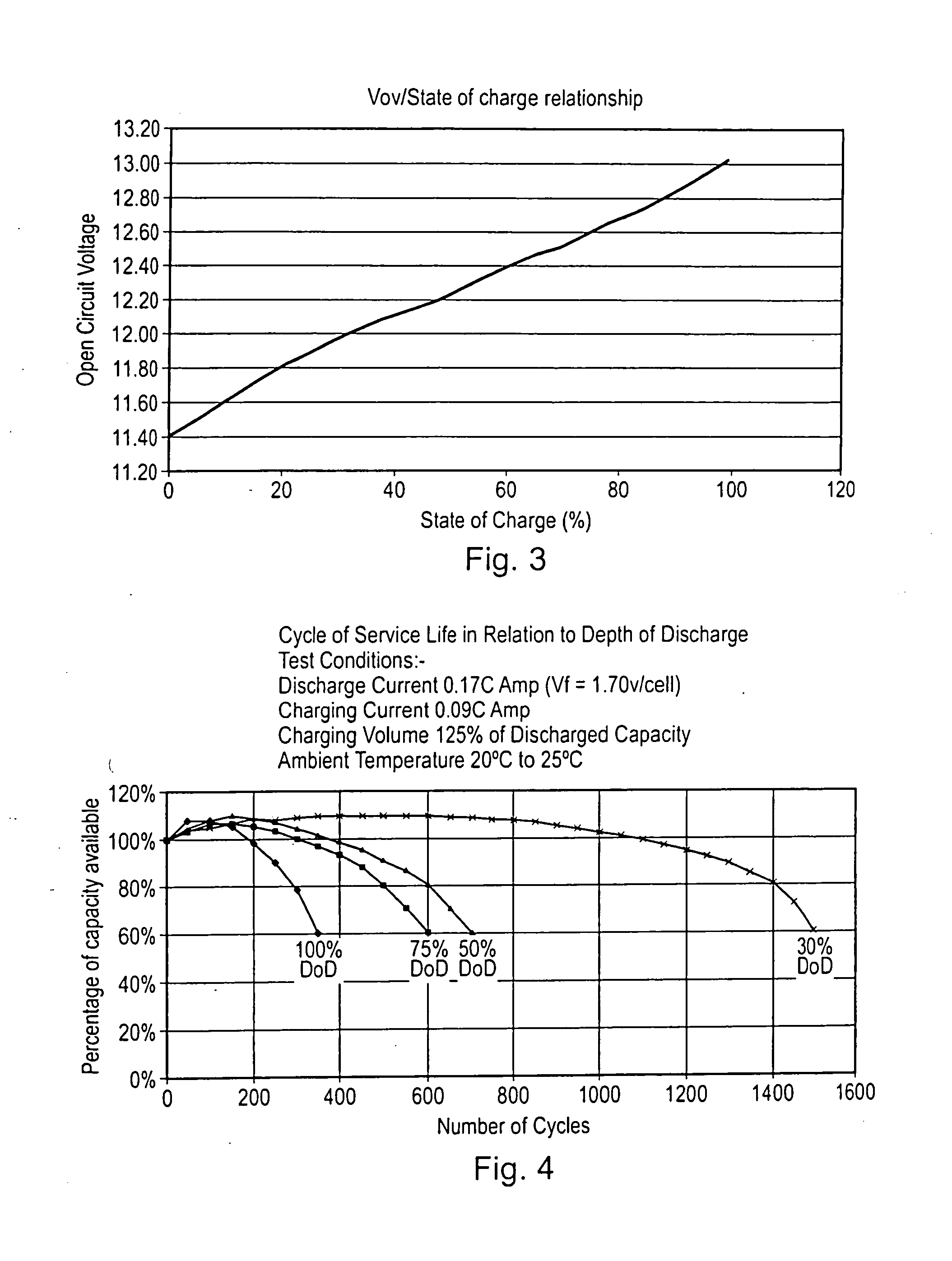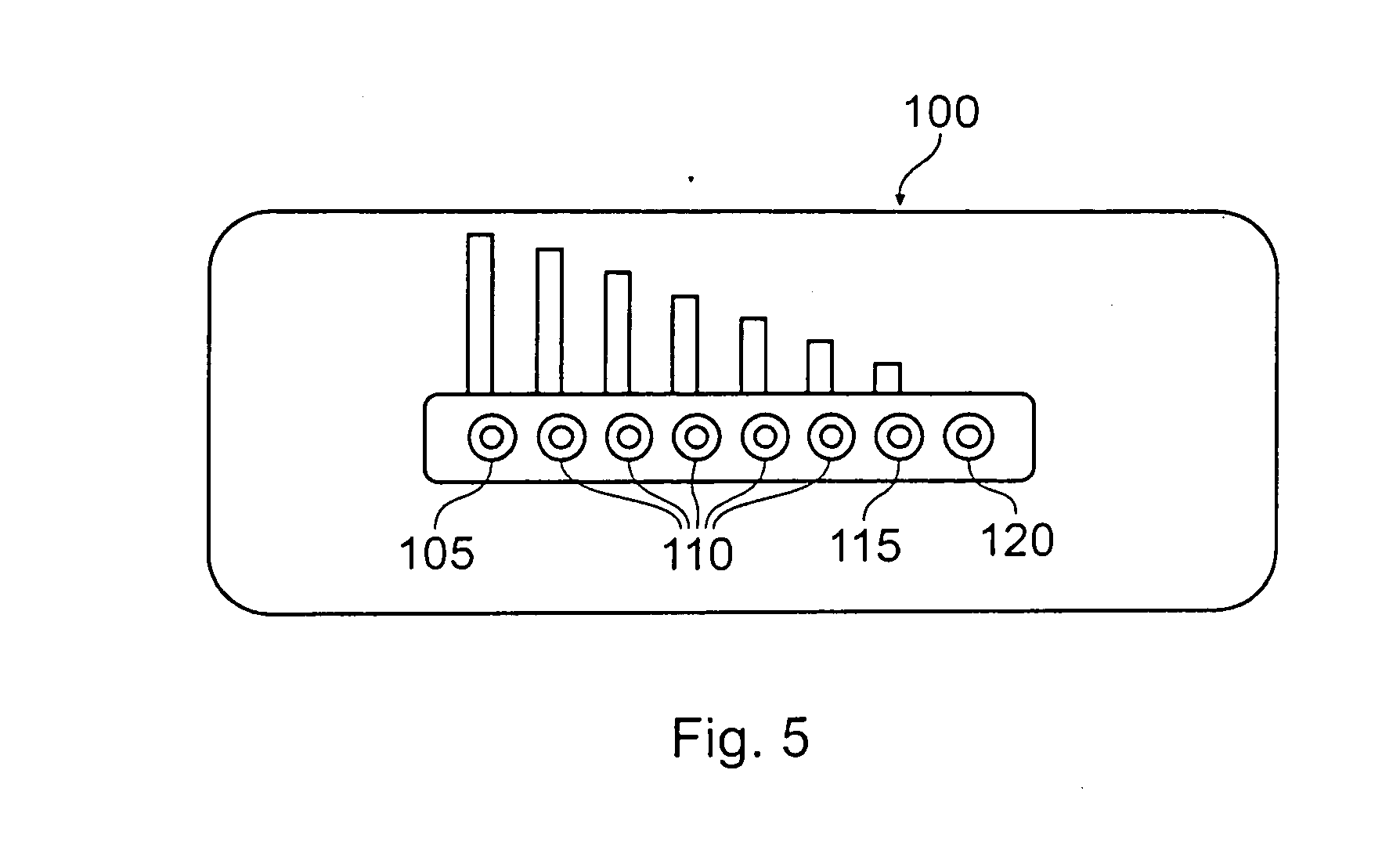Battery life monitor and battery state of charge monitor
a battery life monitor and battery state technology, applied in the field of battery life monitors and battery state of charge monitors, can solve the problems of affecting the usefulness of the battery to store electrical energy, and affecting the accuracy of the reading of the charge sta
- Summary
- Abstract
- Description
- Claims
- Application Information
AI Technical Summary
Benefits of technology
Problems solved by technology
Method used
Image
Examples
Embodiment Construction
A battery monitor 1 shown schematically in FIG. 1 is integrated into the casing of a Lead acid battery 5. The battery monitor 1 comprises a monitor 10 for taking measurements from the battery. The monitoring means comprises a state of charge measuring means 15 including a voltage sensor 16 which is permanently connected to the terminals 25 of the battery and configured to measure the voltage across the terminals 25. The monitor 10 also includes a temperature sensor 20 for measuring the temperature of the battery 5. Because the battery monitor 1 is integrated into the battery casing the temperature sensor 20 effectively reads the battery temperature. In alternative embodiments in which the battery monitor is not integral with the battery the temperature sensor may be mounted on the battery and transmit data to the monitor 10.
The battery monitor 1 also comprises a processor in the form of processor 25 and a memory 30 for storing a life counter 35 having a life counter value represent...
PUM
 Login to View More
Login to View More Abstract
Description
Claims
Application Information
 Login to View More
Login to View More - R&D
- Intellectual Property
- Life Sciences
- Materials
- Tech Scout
- Unparalleled Data Quality
- Higher Quality Content
- 60% Fewer Hallucinations
Browse by: Latest US Patents, China's latest patents, Technical Efficacy Thesaurus, Application Domain, Technology Topic, Popular Technical Reports.
© 2025 PatSnap. All rights reserved.Legal|Privacy policy|Modern Slavery Act Transparency Statement|Sitemap|About US| Contact US: help@patsnap.com



